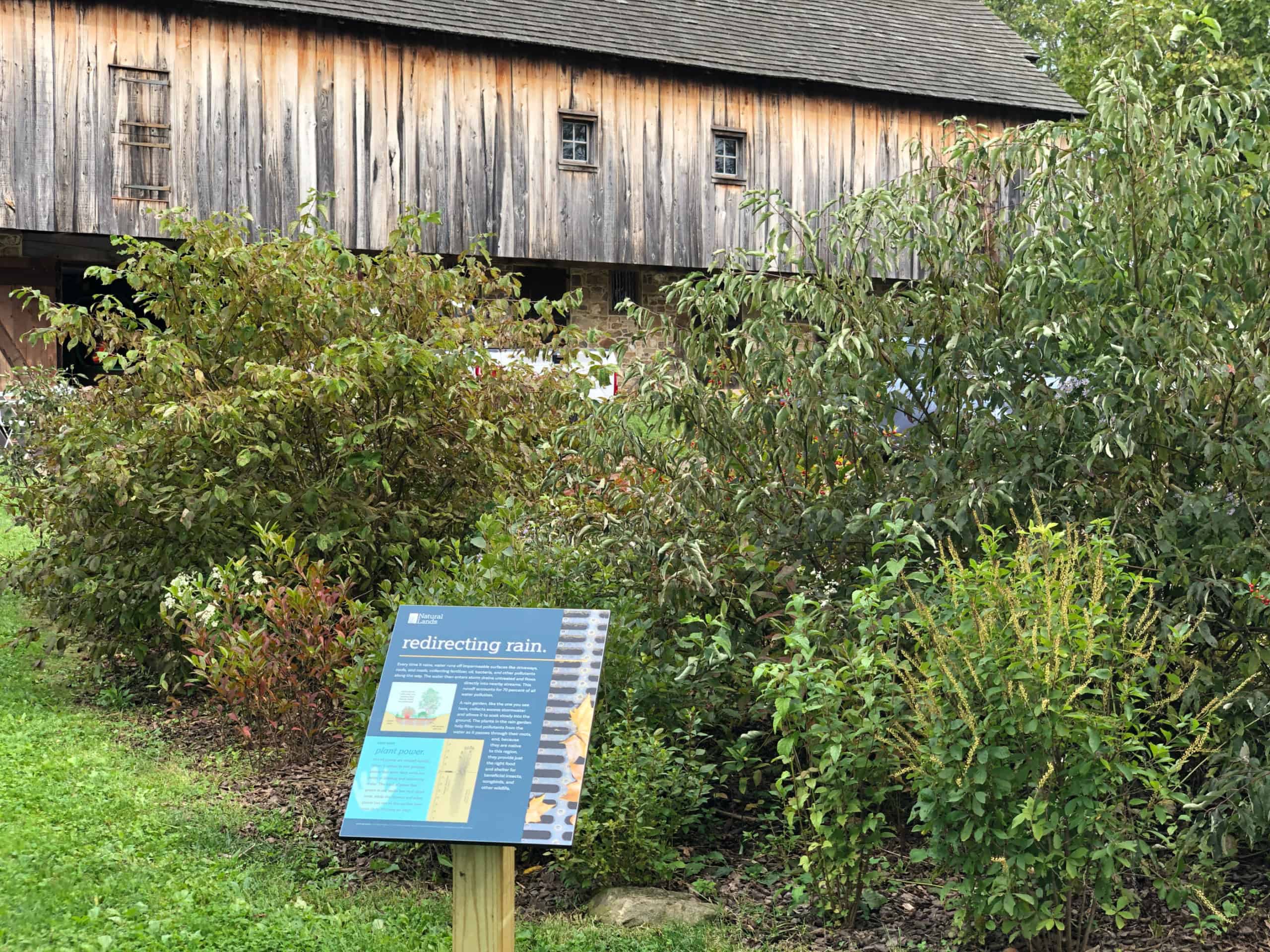Crow’s Nest: The rain garden
By Daniel Barringer, Preserve Manager.

Photo: Daniel Barringer
The rain garden we planted at the Jacob barn (our maintenance center) at Crow’s Nest has grown up nicely, and now we also have an interpretive sign to explain to visitors what it is and why we established it.
Even though the driveway here is gravel, there is some runoff from it, and there has always been a low spot in the lawn downhill from there that stays wet during the months of spring and early summer. Heavy storms periodically inundate the area before it drys out again. If this sounds like an ideal location for a rain garden, it is, even though no special grading of the soil or site preparation was necessary. This is something that homeowners can do with runoff from gutters or driveways that benefits water quality and provide habitat for wildlife, and we wanted to demonstrate how easy it is to create.
We began by laying out the shape of the bed with a garden hose. Then I killed the turf grass in this spot, and planted species of shrubs which do well with occasional flooding: Redosier dogwood (Cornus sericea), Virginia sweet shrub (Itea virginica), sweet pepperbush (Clethra alnifolia), winterberry holly (Ilex verticillata), and blackhaw (Viburnum prunifolium). We mulched the planting, and for the first couple years I put up a low, three-foot fence to keep deer out (deer certainly can jump over that height, but don’t typically jump into a small enclosure). Once the shrubs became established and filled in the space, I took the fence down.
We didn’t plant many herbaceous species at first, though some have come in on their own that we have kept. Good choices here would include swamp milkweed, New York ironweed, blue vervain, Joe Pye weed, or white turtlehead, all species that grow in wet meadows elsewhere on the preserve.
The rain garden not only slows and filters rainwater runoff, but it also screens the service parking area from being seen from our trails, and brings me great joy in the form of its flowers and fall color.
